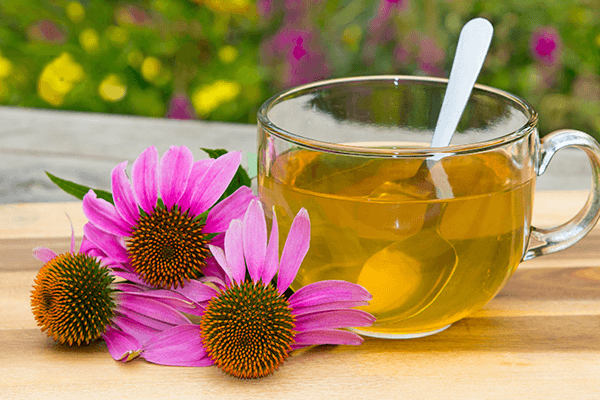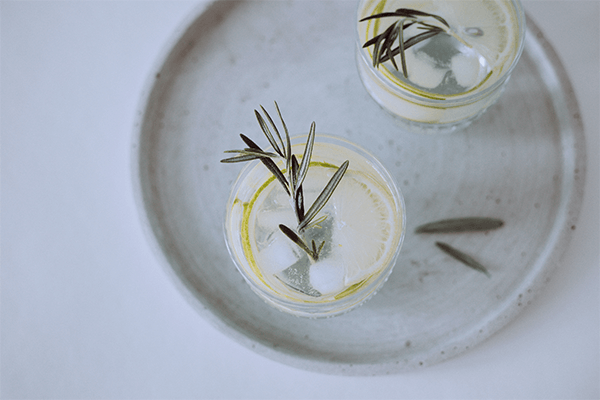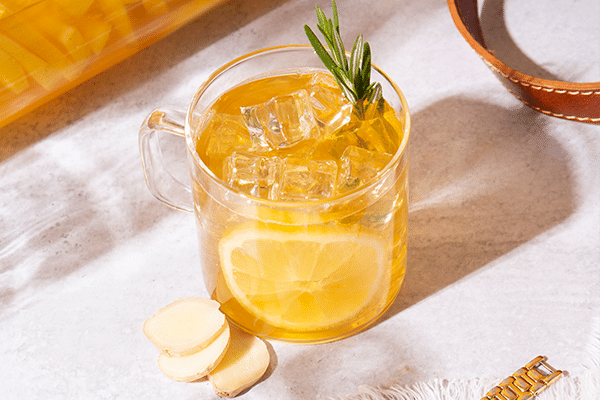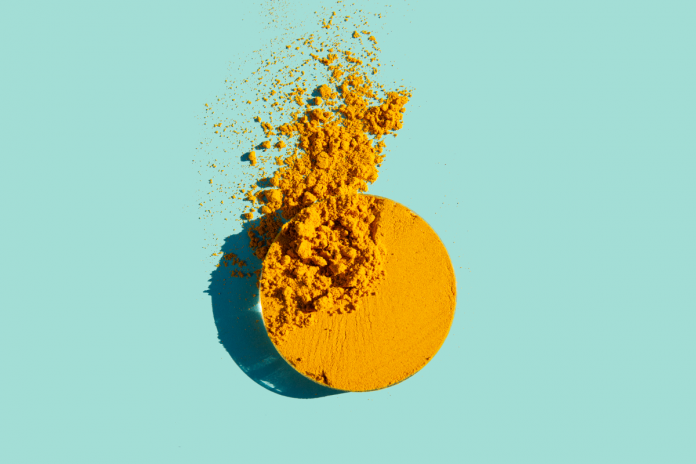The echinacea plant is legendary in herbalism.
And if you’ve ever tried a warm cup of echinacea tea, you know it’s a delightfully soothing experience.
But depending on how you prepare it, the taste can be a bit overwhelming!
So what’s the key to a delicious and healthful brew? With echinacea, it’s all about preparation and pairing.
Let’s take a closer look at what echinacea is, it’s purported health benefits, and how to make tea with it.
What is echinacea?
Chances are, you can picture a purple coneflower in your mind — that’s echinacea.
Echinacea is the name for a group of flowering plants that are native to North America. They’re also called coneflowers, and depending on the species, they can have pink or purple petals that surround the seed head (or cone). Echinacea is related to sunflowers and daisies.
Although there are nine types of echinacea, only three of them are actually used to make herbal remedies:
-
- Echinacea purpurea has purple petals.
- Echinacea angustifolia has more narrow petals.
- Echinacea pallida has pale pinkish to purple petals.
You can use the whole plant (leaves, stem, roots and flower) to make herbal teas, echinacea tinctures and extracts.
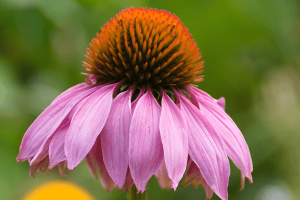
Health Benefits of Echinacea
Echinacea has been used for decades as a natural remedy. Native Americans used it to help with skin problems, toothaches, illnesses and infections.
More recently, echinacea is suggested for people dealing with cold symptoms, and for a good reason. Research has found that echinacea contains numerous active compounds that function as antioxidants, including alkamids, phenolic acids, polyacetylenes, glycoproteins and polysaccharides (1). It also contains caffeic acid, a compound that has antimicrobial properties (2).
Consuming echinacea (as a tea or otherwise) could help support healthy immune function, healthy blood sugar levels and even calmness. It also has anti-inflammatory, antibacterial and antiviral properties which make it a popular skin care ingredient in acne and healthy aging products (3).
How do you make echinacea tea?
If you happen to have purple coneflowers already growing at your home, you’re in luck! You can cut the petals soon after they’ve bloomed to make fresh tea. Or if you prefer, you can cut multiple echinacea flowers and dry them. Once fully dried, save the petals, leaves and echinacea roots in an air-tight glass jar.
Note: Although all the parts of the dried echinacea plant are consumable, avoid using the seed heads for tea. The seeds will alter the taste.
Even if it’s not growing in your garden, you can still enjoy echinacea tea. It’s available in many stores (and online) as loose leaf tea or in tea bags, and luckily they’re prepared almost the same way!
Brewing Instructions for Echinacea Tea
Here’s the best way to brew your cup of fresh echinacea tea:
-
- Add water to a tea kettle and bring the water to a boil.
- Once you have boiling water, take the kettle off the heat and let it sit for a minute or so to cool slightly.
- Put the loose leaf tea or tea bag into a suitable mug.
- Pour the hot water over the tea leaves or tea bag.
- Let the tea steep for 5 to 10 minutes, or as long as desired.
- If you’re making loose leaf tea, strain to remove the parts of the plant before drinking.
Echinacea can take longer than other types of tea to steep, so it’s not uncommon to steep it for up to 15 minutes.
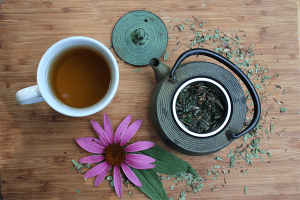
What does echinacea tea taste like?
Echinacea tea has an earthy, unique taste (often referred to as tongue-tingling) that gets stronger the longer you steep it!
Most of us prefer to add other herbs or sweeteners to both improve the flavor and provide even more health benefits.
How can you improve the taste of echinacea tea?
Finding the right tea blend could take a little bit of experimentation. Combine echinacea with other strong-flavored herbal teas and see which one tastes the best to you.
It’s commonly brewed with chamomile, ginger, lemongrass, elderberry or peppermint, all of which improve the taste of the tea and are healthy additions.
If you’d like to add some sweetness, try adding a bit of honey. For a little zest, add lemon juice (to taste).
Echinacea be can be found in multiple forms. Other than teas, powders, capsules and tinctures are the most common ways to consume echinacea.
If you’d like some help creating a personalized tea blend, try consulting a qualified herbalist or naturopathic physician. (Herbalists are trained in how to use plants to promote health. Naturopathic physicians have completed a bachelor’s degree and a Doctor of Naturopathic Medicine (ND) program.)
How often can you drink echinacea tea?
Currently, there’s no dosage recommendation for echinacea, but it’s considered safe for short-term use for most people. Less is known about long-term effects because they haven’t been studied as widely.
One of the best times to incorporate echinacea into your diet is at the first sign of feeling unwell. Similarly, it’s a great addition to your wellness routine at the beginning of sniffle season.
Echinacea should be taken with food and not more than 10 days in a row (4).
Are there any side effects?
Typically, echinacea is considered a safe herbal remedy, but on rare occasions some people have developed a rash after consuming or applying echinacea. A rash is more likely to occur if you have a history of allergic reactions.
People who are allergic to daisies, ragweed, marigolds or chrysanthemums are more prone to have an allergic reaction to echinacea and should probably avoid it.
Echinacea could also worsen asthma symptoms. Minor side effects include an upset stomach, dizziness or nausea. (Reminder: Take echinacea with food.)
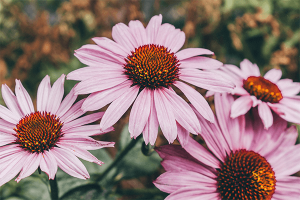
Should you try echinacea tea?
Echinacea should be safe for most healthy adults. Despite this, it’s not for everyone — mainly due to the effects that it has on the immune system.
You should avoid echinacea if you have HIV or AIDS, an autoimmune disorder, a connective tissue disorder or tuberculosis. If you have a fever, you should also avoid taking echinacea.
As always, check with your doctor to make sure echinacea won’t interfere with any medication you’re taking. People who are pregnant should also check with their doctor before consuming echinacea.
Final Thoughts
Echinacea has a long history of use as a soothing herbal remedy. Because it supports healthy immune function, echinacea can be a great tea to turn to if you’re feeling under the weather.
Depending on your taste preferences, you may want to pair echinacea with another herbal tea or add sweetener — it can have a strong flavor.
Remember to look for a high-quality product, and only consume echinacea for up to 10 consecutive days.
